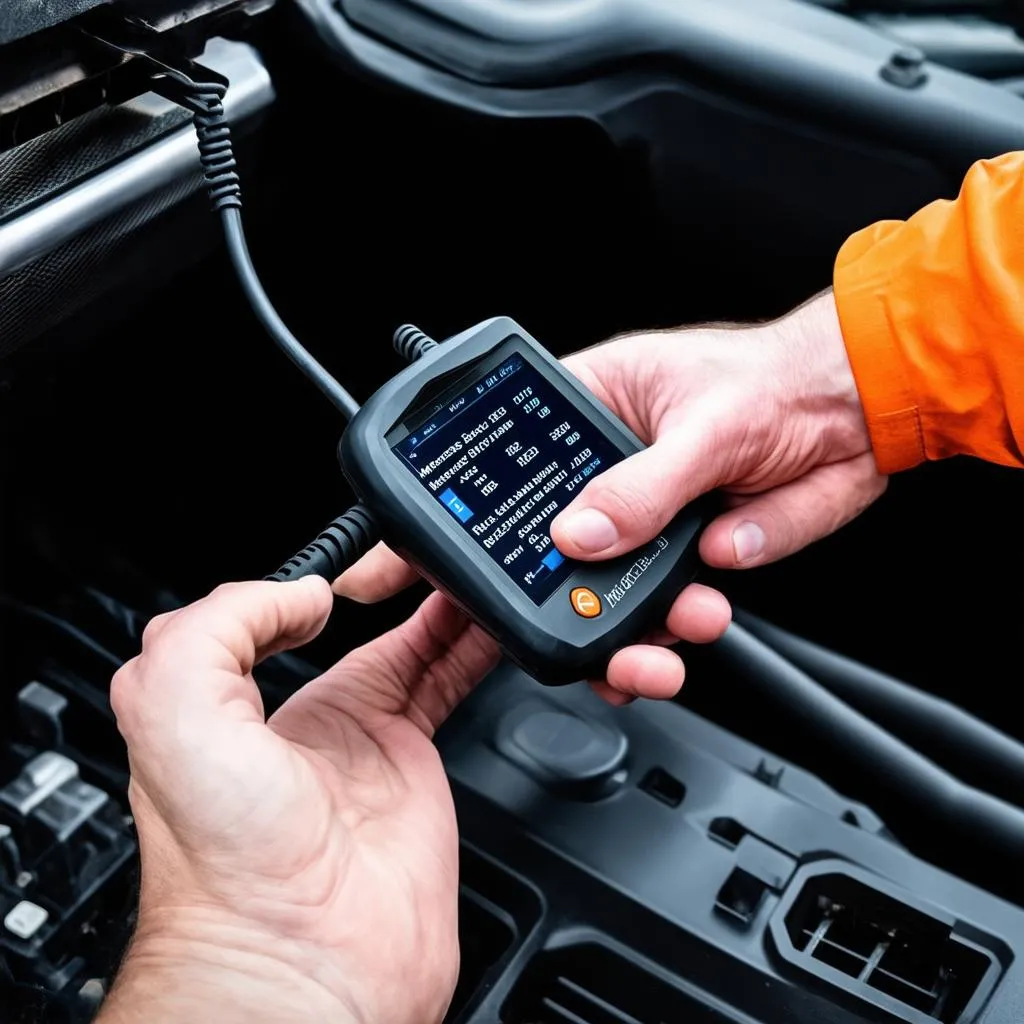The Mercedes Benz W140, a legend in its own right, is a marvel of engineering. But even these automotive masterpieces need a little help sometimes. Enter the Mercedes Benz W140 scanner tool – your key to unlocking the secrets within this iconic vehicle’s computer system.
Whether you’re a seasoned mechanic or a dedicated W140 owner, choosing the right scanner tool can mean the difference between a quick fix and hours of head-scratching. This comprehensive guide delves into everything you need to know about these essential diagnostic tools.
Understanding Your W140’s Needs
Before we dive into the specifics of scanner tools, it’s crucial to understand the diagnostic system onboard your W140. Built between 1991 and 1998, these vehicles utilize an OBD-I system, which stands for On-Board Diagnostics generation one.
“Working with OBD-I systems requires a specific approach,” says automotive electronics expert, Dr. Emily Carter, author of “Automotive Diagnostics: A Practical Approach”. “Unlike later OBD-II systems, OBD-I utilizes manufacturer-specific protocols and connectors, meaning your scanner tool needs to be compatible.”
mercedes-w140-obd-port|Mercedes W140 OBD Port|Close-up photo of the OBD-I port in a Mercedes Benz W140, highlighting its unique shape and the surrounding dashboard area.
Choosing the Right Scanner Tool for Your W140
Selecting the appropriate scanner tool is critical for effective diagnosis and repair. Here’s what you need to consider:
Compatibility:
Your scanner tool must be compatible with the Mercedes Benz W140’s OBD-I system. Look for tools explicitly stating their compatibility with this model and year range.
obd1-scanner-for-mercedes|OBD-I Scanner for Mercedes|A mechanic holds an OBD-I scanner plugged into a Mercedes Benz W140, showcasing its screen displaying diagnostic codes.
Functionality:
Scanner tools come with a variety of functions. Consider your needs:
- Basic Code Reading: Do you need to read and clear basic fault codes?
- Live Data Streaming: Do you need to view real-time sensor data to analyze performance?
- Advanced Functions: Do you require access to module-specific functions like actuation tests or adaptations?
Budget:
Scanner tools range from affordable code readers to professional-grade diagnostic systems. Determine your budget and balance it with the features you need.

